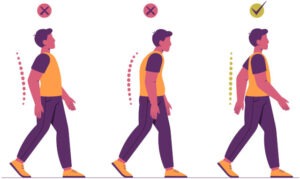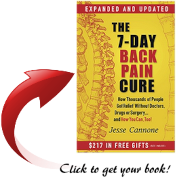The spine is a complex structure made up of bones, discs, ligaments, and muscles. When it comes to pain relief, stabilization of the spine is crucial because it helps in maintaining proper alignment and support for the entire body. And before we dive into this topic, I want to let you know that I am not a medical professional, and what follows is not medical advice. I am just a goy on the internet that enjoys researching topics on pain relief and management, with the hope that it may be of value to you. Without further ado, here is how stabilization of the spine can provide pain relief.

Image by Freepik
- Reduced Strain on Muscles: When the spine is stabilized, the surrounding muscles do not have to work as hard to support the body. This reduces muscle fatigue and strain, which can be a significant source of pain.
- Minimized Nerve Compression: Stabilization techniques can prevent excessive movement of the spine, reducing the risk of nerves getting pinched or compressed. Nerve compression often leads to radiating pain, numbness, or tingling sensations along the affected nerve pathway.
- Improved Posture: Stabilizing the spine encourages better posture. Poor posture can strain the muscles and ligaments, causing pain. Proper alignment, helped by a stable spine, reduces this strain.
- Support for Injured or Degenerated Discs: Spinal stabilization techniques can unload pressure from degenerated or herniated discs. By maintaining a stable spine, the weight-bearing load is distributed more evenly, reducing pressure on damaged discs, and alleviating associated pain.
- Prevention of Further Injury: Stabilizing the spine can prevent further injuries, especially in cases of conditions like herniated discs or spinal stenosis. Avoiding excessive movement protects vulnerable areas, allowing the body to heal naturally.
- Facilitation of Healing: A stable spine promotes the natural healing process. When the spine is in a stable position, it allows injured tissues, such as muscles and ligaments, to heal without being subjected to continuous strain and stress.
- Enhanced Functionality: A stable spine enables better movement patterns and overall functionality. When the spine is properly stabilized, it enhances the body’s ability to perform daily activities without causing pain or discomfort.
- Physical Therapy and Rehabilitation: Many rehabilitation programs focus on stabilizing the spine through specific exercises. These exercises strengthen the core muscles and improve the stability of the spine, which, in turn, provides relief from pain.

In summary, stabilizing the spine reduces strain on muscles, minimizes nerve compression, supports injured or degenerated discs, prevents further injury, helps with the healing process, enhances functionality, and is a fundamental aspect of physical therapy and rehabilitation. All these factors contribute to pain relief and improved quality of life for individuals experiencing spine-related pain.
To Your Success & Freedom,
Glenn Shimabukuro



